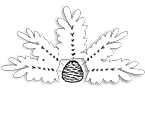Description, Characteristics, Culture, Usage and Other Types of Syagrus
By Phil Bergman
COVERED IN THIS ARTICLE:
Queen Palm Care, Culture, Appearance, Growth, Usage in Landscape, Fertilizer, Watering, Cold tolerance and Hybrids. A common California Palm Tree.
INTRODUCTION
The Queen Palm is one of the most common palms seen in Southern California. There are literally hundreds of thousands of them planted throughout communities. It is also a common palm seen in Northern California, the Gulf States and throughout the world. The only other palm that is seen this commonly is the Mexican Fan Palm, Washingtonia robusta. The Queen Palm Tree is a fast growing palm that will get fairly tall. It is easy to find and purchase. It’s popularity has to do with it’s ready availability, its fast rate of growth, and its durability. It’s botanical name is Syagrus romanzoffiana, see pictures below.
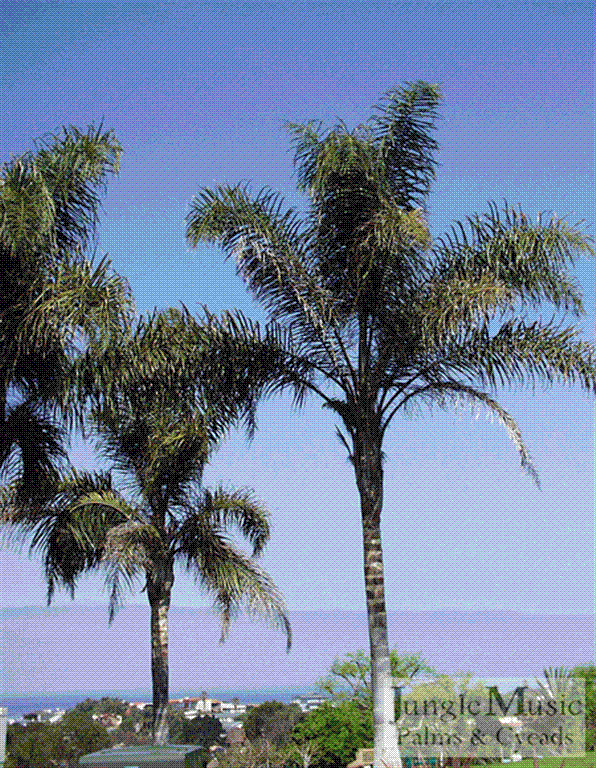
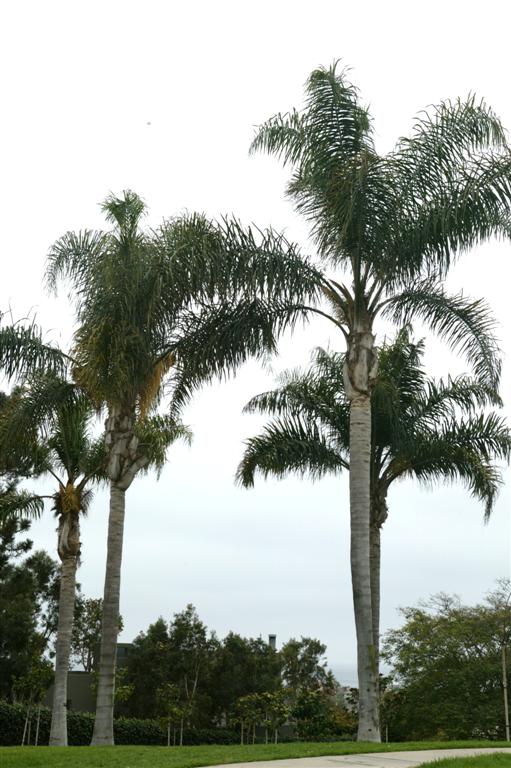
THE GENUS SYAGRUS
The Queen Palm is a type of Syagrus. Syagrus is a genus of over 40 species and is expanding as new species are identified. All species are from South America and the Caribbean. There are single trunk species as well as suckering species. Some get quite tall while others form no trunk and are dwarfs. No species have the popular crown shaft seen in other genera. Leaf appearance is variable with some being very plumose (fluffy) while others are more flat. Trunk caliper is variable with some being quite thick and stout. Syagrus are monoecious, meaning that only one tree has the capability of making fertile seeds. Enthusiasts like this genus because many can be successfully grown in domestic gardens and most are good growers. Distantly related to the Coconut Palm, Syagrus often have large seeds and the flowers are apparent below the crown of leaves. Some of the fruit and seeds of this genus are edible. It is not uncommon to see squirrels eating the fruit of a large Queen Palm.

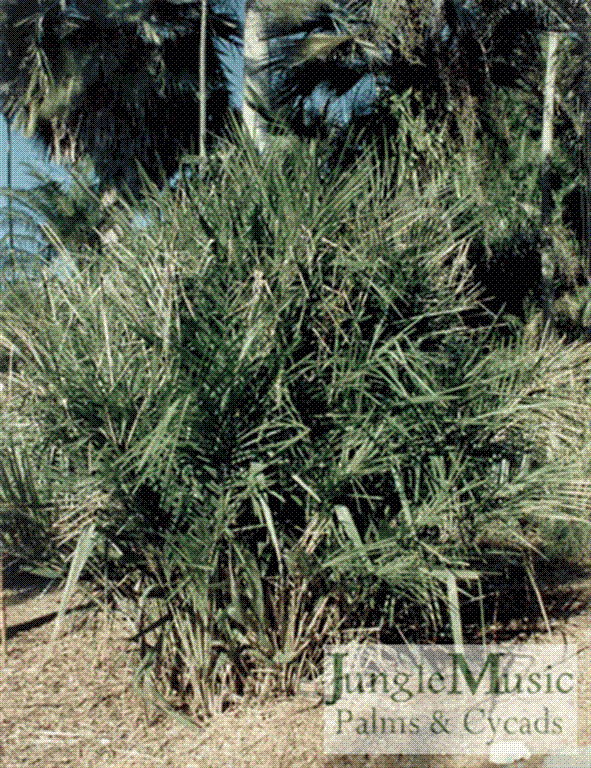
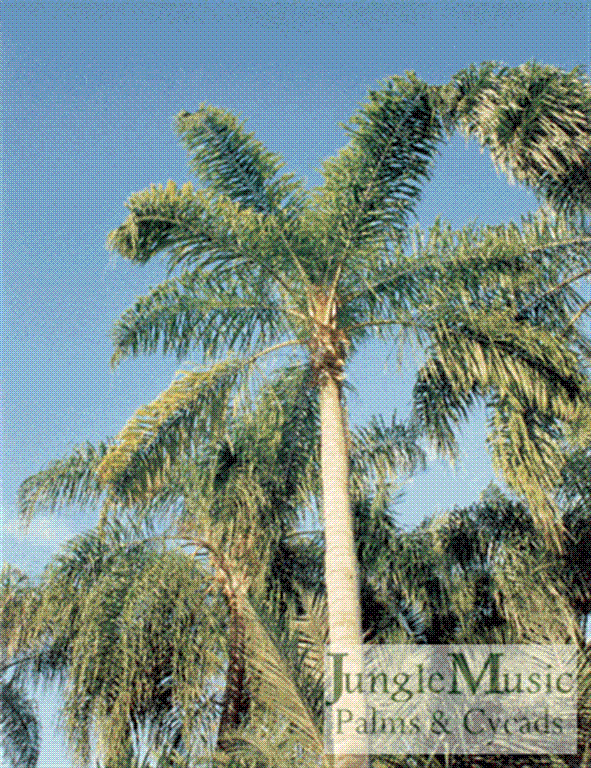
THE QUEEN PALM, SYAGRUS ROMANZOFFIANA
NATIVE HABITAT and HISTORY
The Queen Palm is native to southern Brazil (as are many Syagrus), northern Argentina, Paraguay and Uraguay. There it tends to grow in lowland areas or on small mountain ranges. This species was known for many years as Cocos plumosa and sometimes you’ll still see it called this in nurseries. This incorrect name began being used, but few knew it had been previously described in 1823 by Adelbert von Chamisso, who named is Cocos romanzoffianum. In 1916 Becarri broke up the genus of Cocos ito seven groups. With this, and at that point, this species was known as “Arecastrum romanzofianna“. Later the species was grouped with Syagrus and to this date its name has been Syagrus romanzoffianna.This points out how, over times, it is not uncommon to see names of a given species change over and over again.
CHARACTERISTICS OF THE QUEEN PALM
Syagrus romanzoffiana is a single trunk palm that can easily get to a height of 50 feet. I have personally seen specimens reach a height of greater than 60 feet when grown under optimal conditions with plenty of water and fertilizer. Trunk diameters can get to almost two feet. The leaves get a length of up to 12 feet and are plumose, or multi-ranked. In other words, they are quite “fluffy” in appearance. Each leaf can be quite heavy and the petiole bases are fibrous and thick. An average tree can carry as many as 15 leaves or more. Leaf color is dark green unless the plant is nutritionally challenged or in too hot and dry of a climate. The crown is full and rounded. As these leaves age (lower part of the crown), they turn brown and tend to hang down toward the ground and adjacent to the trunk. These have to be manually removed or the tree can look unsightly. They are not a “self-cleaning” species.
Examples of very tall Queen Palms. On the left below, specimens go up to about the eighth floor, on the right they line a street, twice the height of telephone poles.

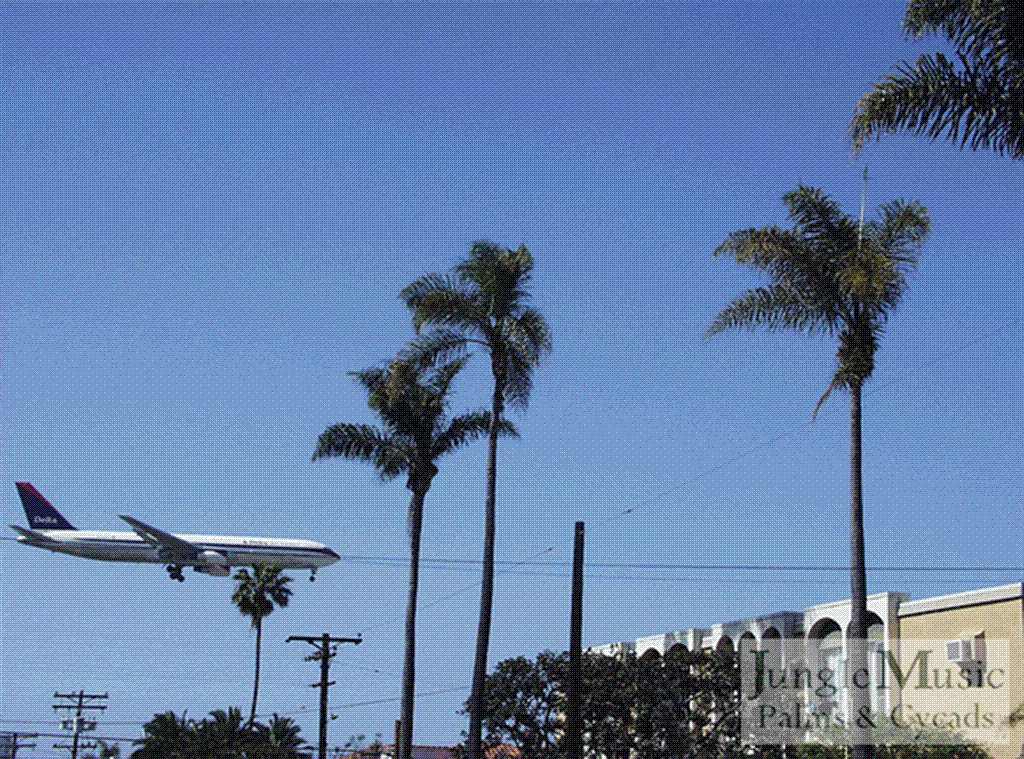
The trunks, as mentioned, tend to be thick and fairly smooth. It is not unusual too see their faint growth rings separated by more than 12 inches on a vigorous specimen (see below). Flowers and seeds are born below the crown of leaves. The fruits are an intense yellow when mature and fall to the ground when ready for germination. One can see a mature Queen with what seems to be literally thousands of fruits near the base of the tree. The outer bract of the flower is quite woody when mature and has a very sharp point on the end. This could prove to be dangerous if unleashed in a windstorm and striking a person.
Trunks of the Queen Palm Tree
The trunksshow amazing growth. On the left, below, note the distance between each ring. This means with each leaf nearly a foot of trunk height resulted (left). On the right is a picture of green fruit on the right and near mature fruit on the left, ripening to the yellow color.
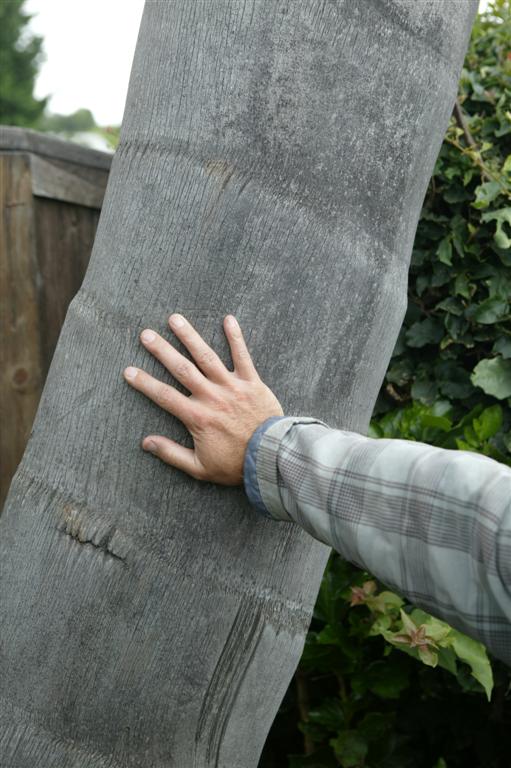
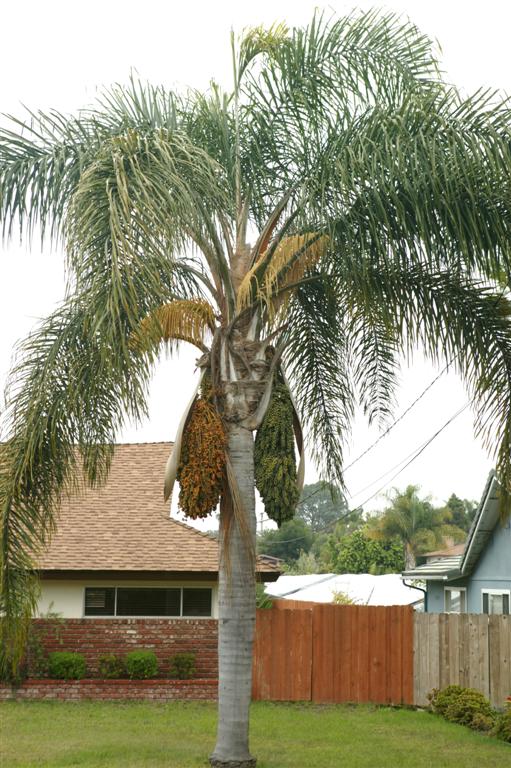
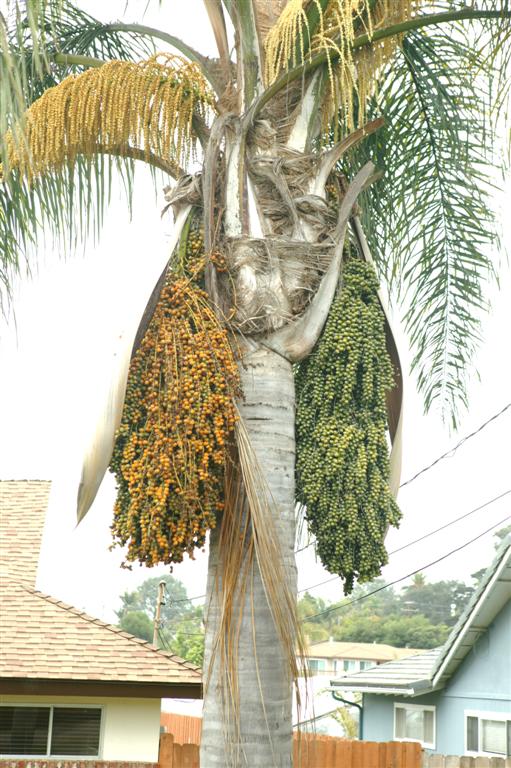
GROWTH AND CULTURE OF THE QUEEN PALM: Queen Palm Care
Queen Palms, even from the seedling stage, are very fast growers. Seeds will germinate in several months and are easy to grow. Young seedlings prefer filtered light but soon tolerate full sun in most areas. It is not unusual to be able to get a 6 foot 15g tree in two to three years from the seedling stage. This is one of the reasons that this species is so affordable. In most areas, one should plant this palm in full sun. In extremely hot inland or desert areas, filtered light might be needed. In general, it is not considered a drought tolerant palm but can take periods of low water. Queen palms grow faster when given more water and fertilizer. But, it is surprising that neglected specimens can look attractive. If given plenty of water and fertilizer, this species can be strikingly beautiful. In my locality, a planted 15g tree can reach heights of ten to twenty feet in a period of just a few years. It can develop several feet of trunk per year.
An ideal soil for queen palms would be good draining and have some organic material applied. But, as a species, Queen Palms seem to tolerate a fair amount of neglect and suboptimal soil. In Southern California one can see this species in dense clay soil and well as sandy loam. With a lack of water and fertilizer, the most common malady seen is yellow leaves (see photo below), slower growth and thinner trunks. Queen palms, because of their fast growth rate, do need fertilizer to look their best. A slow release fertilizer with microelements should be applied at least 3 times per year. Watering frequency would opitmally be 3x per week in most areas during the warmer seasons. Roots can be a bit invasive if planted right next to a structure, but in general plants usually do not hurt house foundations.
Sometimes one will see a large Queen Palm where the base of the trunk is rather thin. Then, as you look upward, the trunk seems to bulge toward the middle. This is usually the result of a new property owner giving a neglected tree plenty of water and nutrition such that more vigorous growth occurs. Watch for it and you’ll notice is around town yourself.
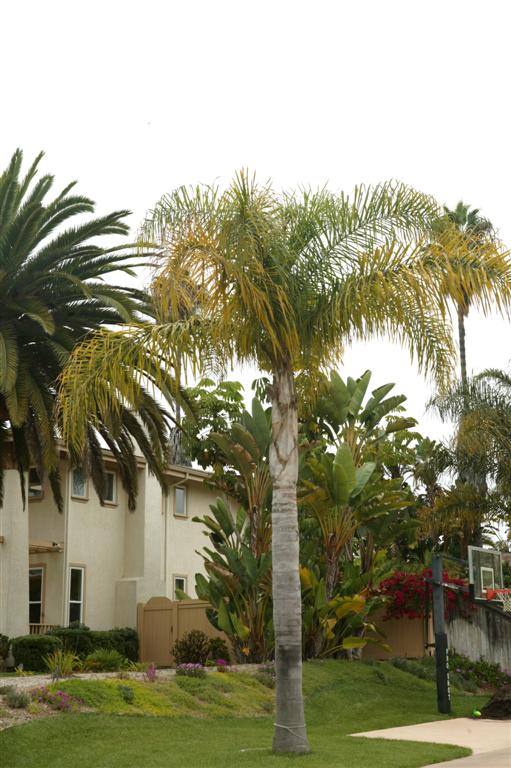
.
COLD TOLERANCE OF THE QUEEN PALM
Some palm reference books will cite that this species tolerates temperatures down to 25 degrees F. However, most enthusiasts have found that the Queen Palm will survive temperatures into the upper teens F. I would estimate that temperatures of below 17 degrees will burn the palm and much below this will kill it. This means that it is adaptable to many garden zones and will tolerate freezes in many area. Because of it’s durability and cold tolerance, it is commonly grown in areas that cannot grow other more tropical species. Interestingly, when the Queen Palm is hybridized with other more cold tolerant species like Butia capitata, one sees a bit more cold tolerance than the pure species.
VARIABILITY IN APPEARANCE OF QUEEN PALMS AND HYBRIDS
As discussed, variation in appearance can be secondary to cultural issues. Also important are Queens from natively different populations in the wild and from hybridization. When looked at thoroughly as a species, one will see variations in the size of the trunk, overall height, length of the leaves, size of the fruit and color of the leaflets. Probably most important of all factors is horticultural care. Plants that receive plenty of water and fertilizer tend to be larger and more green and robust. There are, however, other factors which can be at play. These include this species’ tendency to hybridize as well as different genetic strains in the wild that are then marketed domestically. Regarding hybridization, in habitat some localities overlap with other Syagrus species and hybrids can occur. This can lead to seed collection of “Queens” that end up looking a bit different from others of the same species. Also, man can intentionally cross the Queen Palm with various other genera (below). Any hybridization can result in major differences between the hybrid and the “normal” Queen Palm.
Another factor involving the difference seen among Queens can be that seed has been collected in different native localities. It has been discussed among enthusiasts for years that there is a variety called the “Silver Queen” which comes from an area called Santa Catarina in Brazil. This “variety” was touted to have bigger trunks, a silver appearance and faster growth rate. This may be true. Undoubtedly there are differences among plants that are offered at nurseries. But, their similarities are much more pronounced than their differences.
Of significant importance to us now, however, is the hybridization of Queens with other species or genera. In recent times, one of the most popular of these hybrids is known as the Mule Palm. This is an intergeneric hybrids between the seed bearing Butia capitata ( Pindo Palm, Jelly palm) and the Queen Palm. Queen pollen is transferred onto the blossom of the Butia. The reverse cross has also been done, but it is the true Mule Palm (Butia seed bearer) that is most popular. This hybrid is an attractive palm that resembles a Queen Palm but is more cold hardy. It is not as tall but still an excellent grower. It is particular sought after when enthusiasts routinely see temperatures into the mid to upper teens F. Because this hybrid’s production takes hand pollination of the flowers, plants tend to be expensive.
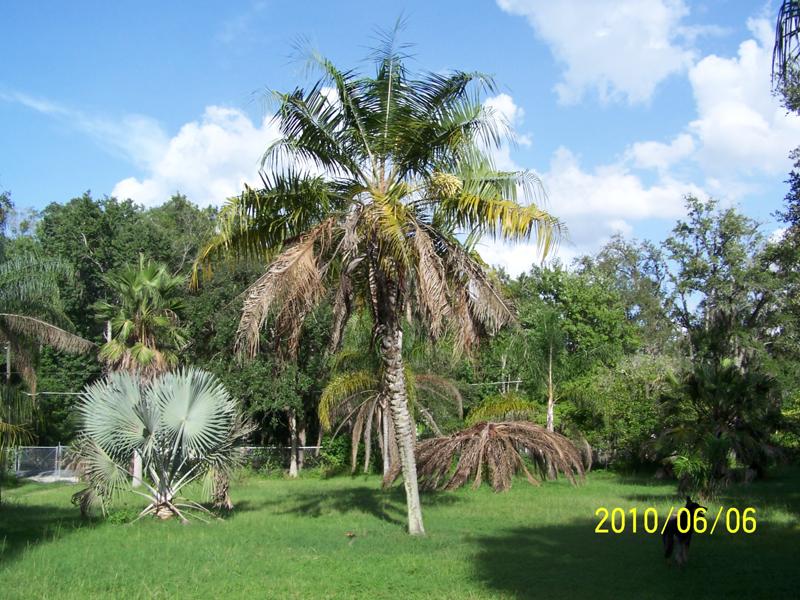
photo by M.H.
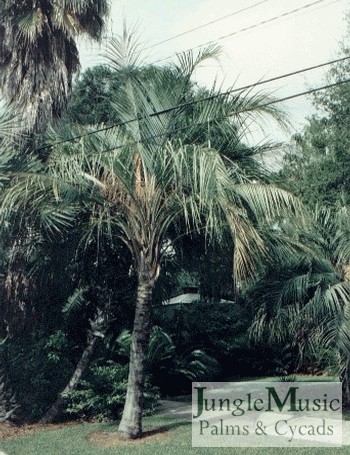
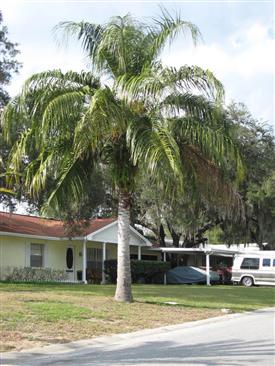
DIGGING AND MOVING QUEEN PALMS
There is no question that the Queen Palm can be dug and moved from one location to another. Specimens will tolerate the dig and transplant easily. However, in the nursery trade this is seldom done. This is because the costs of digging and replanting are greater than what people will pay for a large specimen Queen Palm. And, a much more affordable and small plant will quickly become quite large. As nursery plants are affordable and very available, there is essentially no demand for large dug specimens. Therefore, homeowners who want one removed typically have to pay a tree removal service to eliminate the plant. “Palm diggers” seldom remove them.
USAGE OF QUEEN PALMS IN LANDSCAPE
Consumers worldwide have used Queen Palms for making a landscape statement. They are big palms and get quite tall. Given their ease of growth, it is quite common to see them in domestic or commercial plantings. They are one of the best palms for establishing canopy (shade from the sun and protection from cold). However, because they are so commonly seen everywhere, enthusiasts and creative landscape companies tend not to use them. Perhaps this is a bit unfair to the species because it is quite attractive. But, collectors seem to dismiss this species as they can look up and down the street in both directions and see dozens of Queens. Even with this, the Syagrus romanzoffiana remains the number one most commonly sold palm tree in department and outlet stores in Southern California. It is not rare to see novices overplant their yard with the Queen Palm. And, it is often common for such people who later become enthusiasts, to remove most of their Queen Palms at a later date.
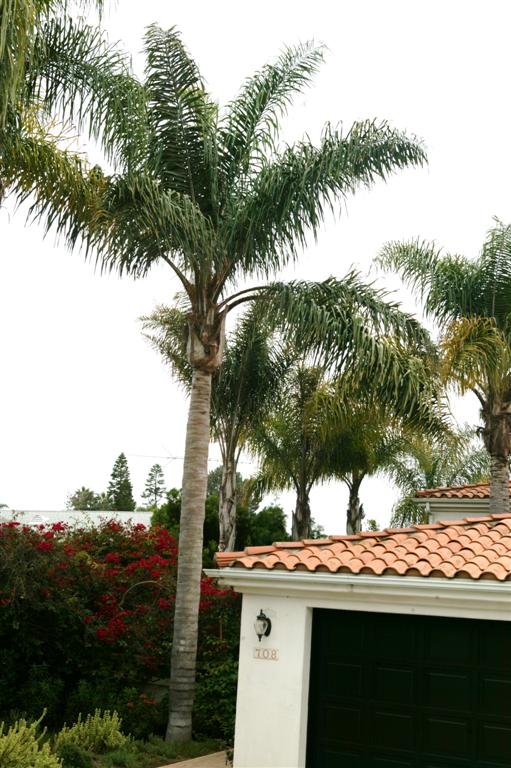
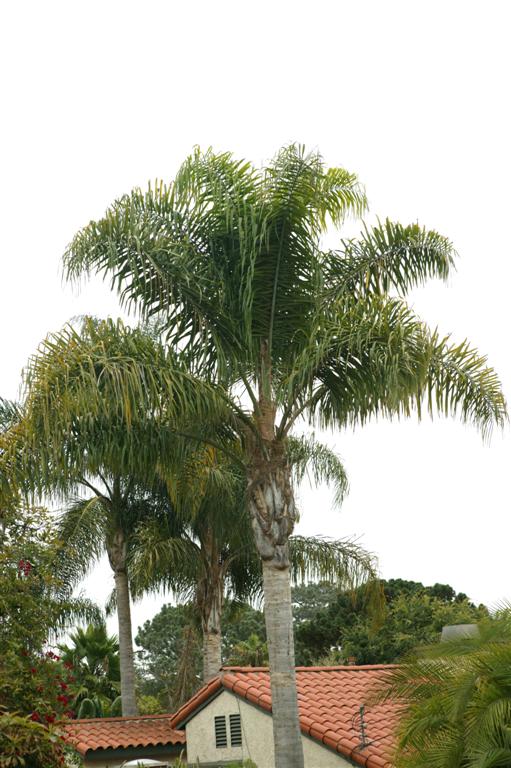
Queen Palms are one of those species that could be utilized to line a street or driveway. This is commonly seen in Southern California and other parts of the world. They give a majestic appearance and the crowns are eventually up against the blue sky. Alternative species commonly used for parkway plantings include Royal Palms, King Palms and Fishtail Palms.
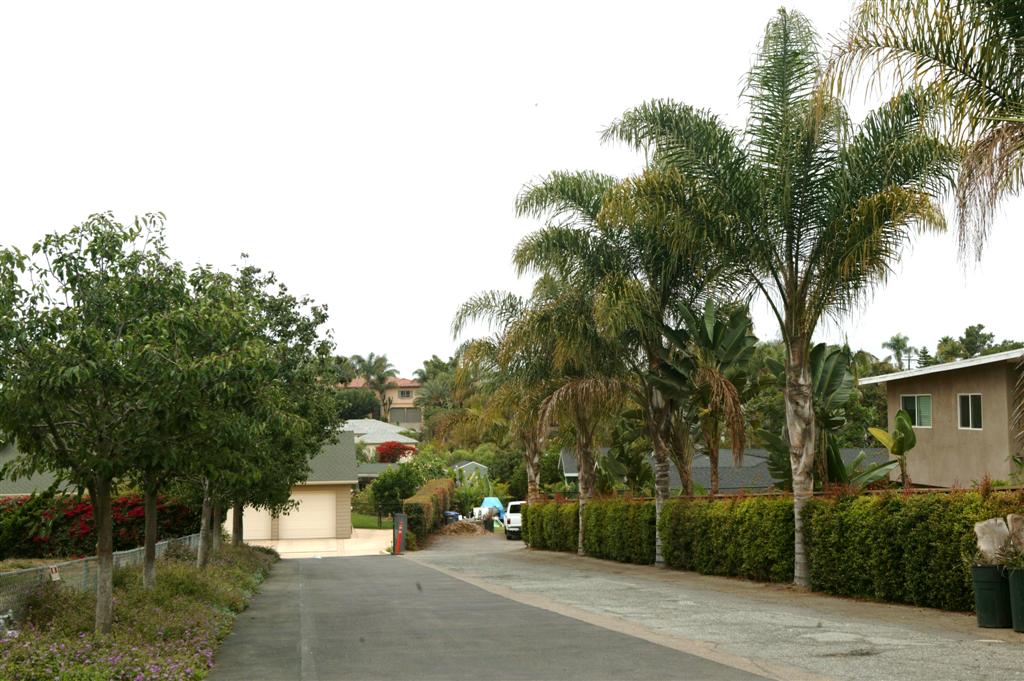

There are other more unusual Syagrus species that could be used as a substitute for the Queen Palm The problem is that most landscape architects and contractors don’t know the other species. They rest on the facts that everyone knows Queen Palms, that they are cheap and readily available. Therefore, to the unimaginative person, Queen Palms are selected off the “short list” and used over and over again. Hopefully with time such professionals will come to recognize the virtues of alternative species.
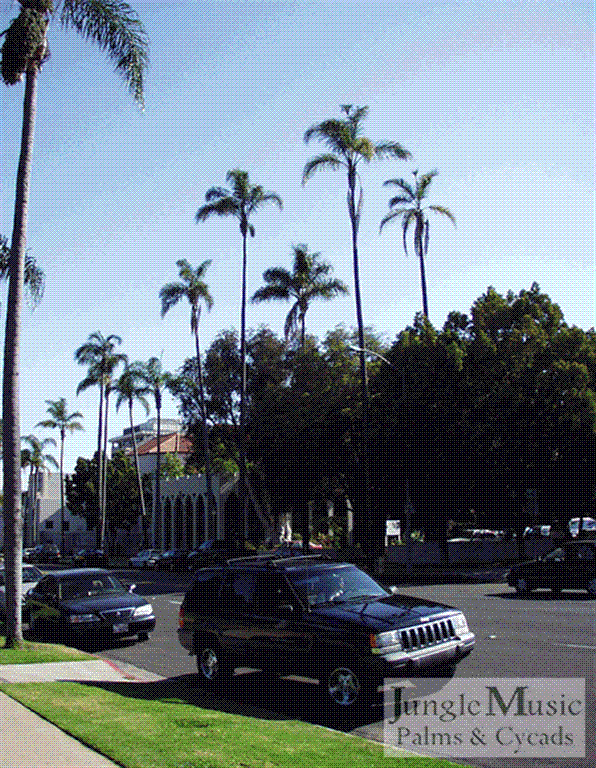
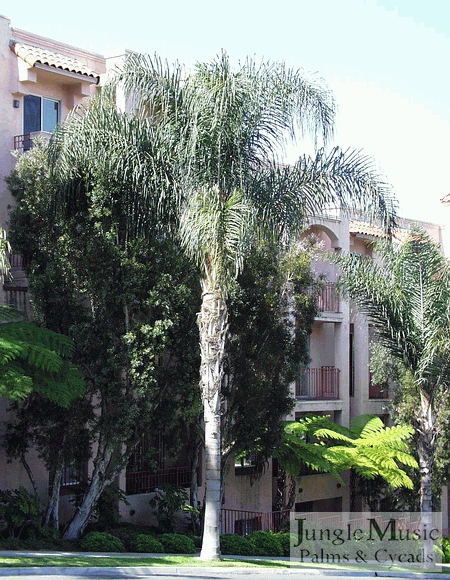
QUEEN PALM GROUPINGS
Most people plant Queen Palms as a single plant. They might plant many in their yard or project, but these are typically not grouped. This is because, as a single tree, the Queen is quite large. However, one occasionally sees groups of Queen Palms, most commonly three together (like we see with King Palms). The result might be three similar sized plants with time or sometimes stair stepping in sizes. Such a planting gives a lot of canopy generated shade below. Of note, to get the bending out appearance of the Queens (below), they have to be grown from a seedling stage together. If you merely take three older plants and put them in the ground close to each other, you get three vertical trunks without the bend in the trunks at the ground.

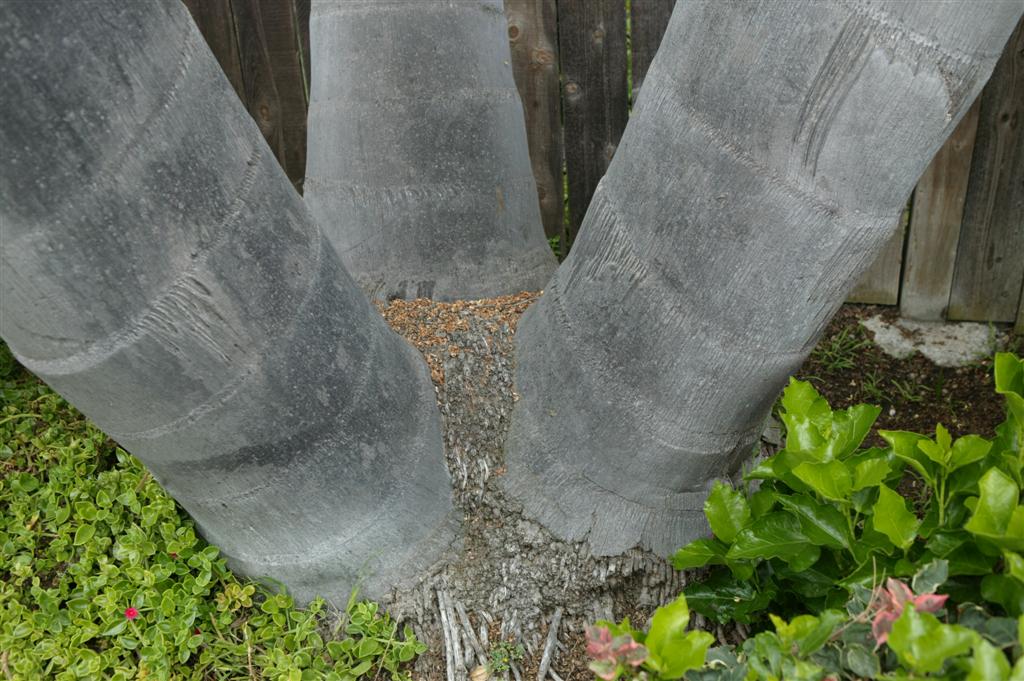
DISEASE AND PESTS WITH QUEEN PALMS
In Southern California, the most common problems we see with growing Queen Palms is cultural. This means they are given too little water, too little fertilizer, or are no given enough ample sun. In terms of insects, Queens can be afflicted with scale, mealybug or even aphids. Older specimens can get trunk boring insect damage. And, a decades old tree can be subject to termites. Diseases and pests are more common in sickly or poorly maintained plants.
USAGE OF QUEEN PALMS IN CONTAINERS OR IN THE HOUSE
Queen Palms are not the ideal containerized species of palm to grow. This is because they grow very rapidly and quickly surpass the size of their container. For instance, on moving a 15g Queen into a 20g pot, one typically only has one to two years before the roots have totally occupied the container. If not moved up to a larger pot, the tree starts to look stressed and sickly. Another reason that this species is a bad choice for a container is that they get quite tall quickly and winds can literally blow over the entire plant. It is true that huge concrete containers can be used for Queens, but typically ornamental or nursery pots just don’t have enough soil volume to support a tall Queen Palm.
For many of the same reasons, the Queen Palm is a poor choice for growing inside the house. They quickly approach the ceiling and often look anemic and stressed. Also, inherently, this species does not like being indoors where it gets less air circulation and humidity. For this reason, it is seldom recommended as a house plant.
ALTERNATIVES IN LANDSCAPE TO THE QUEEN PALM
There are many other palms that can be used instead of the more common Queen Palm. And, these alternative species are all beautiful and give large specimen palms. For example, one can use other species of Syagrus. Possibilities are S. botryophora, amara, coronata and pseudococcos. Characteristics of these species are given elsewhere at this website. One could also choose alternative genera such as Roystonea, Archontophoenix, Parajubaea, Ravenea or Caryota.
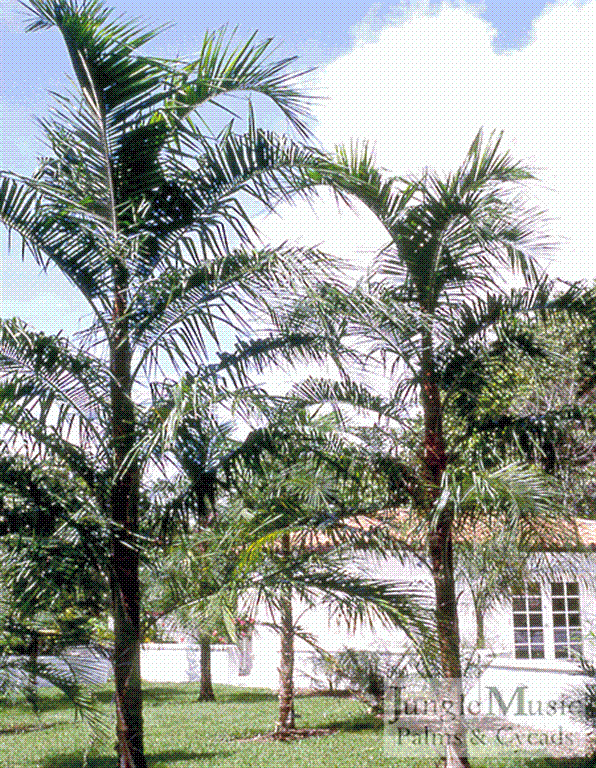
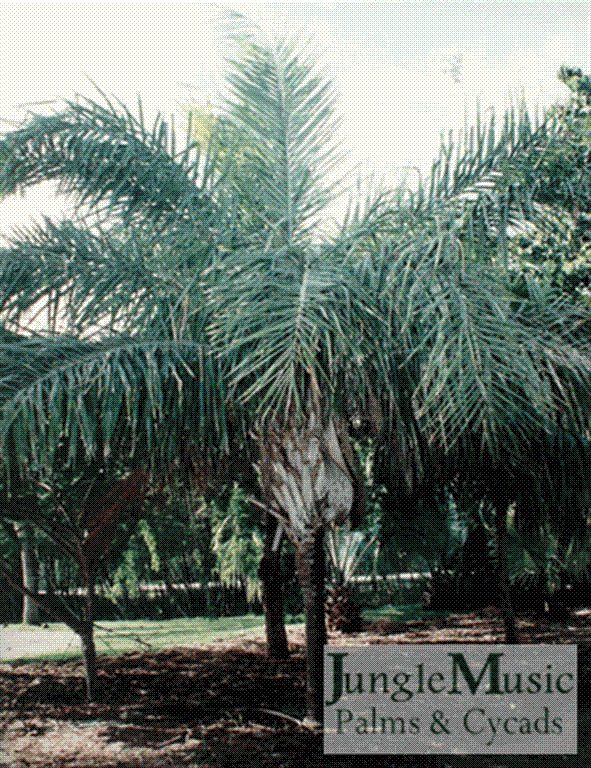
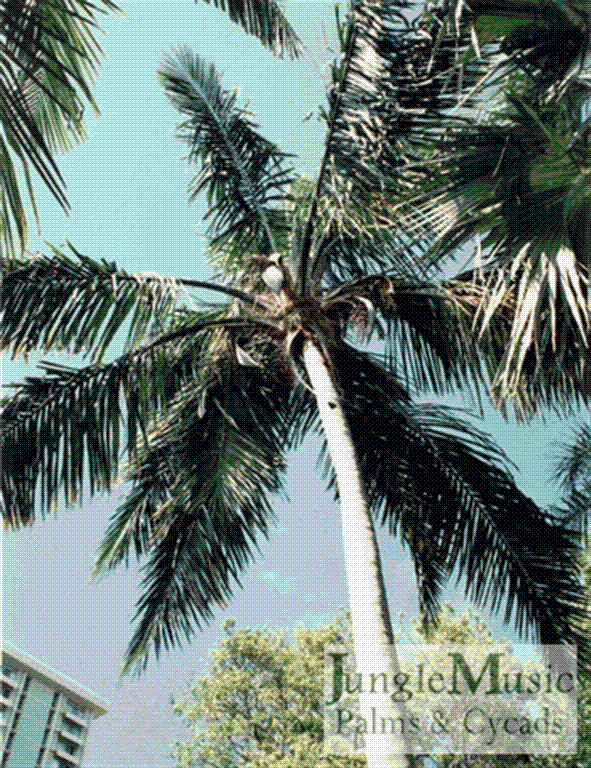
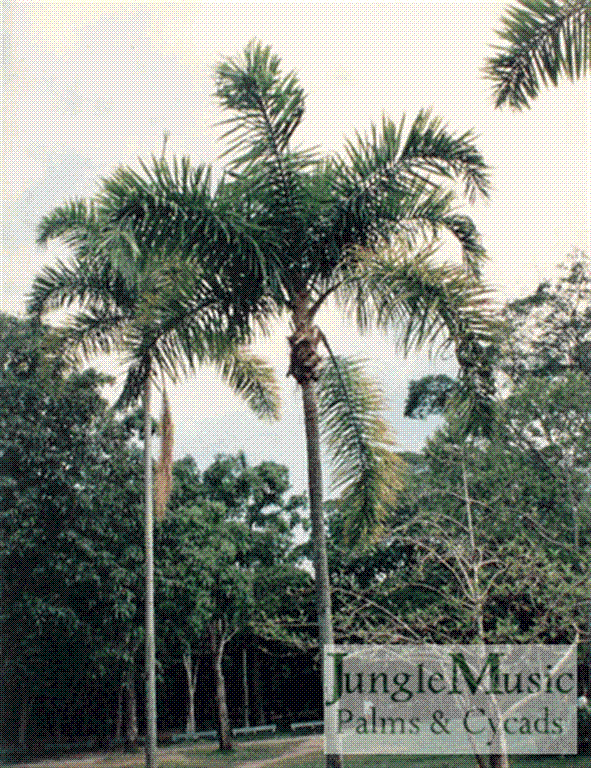
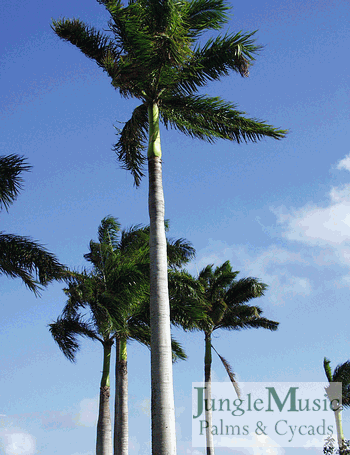
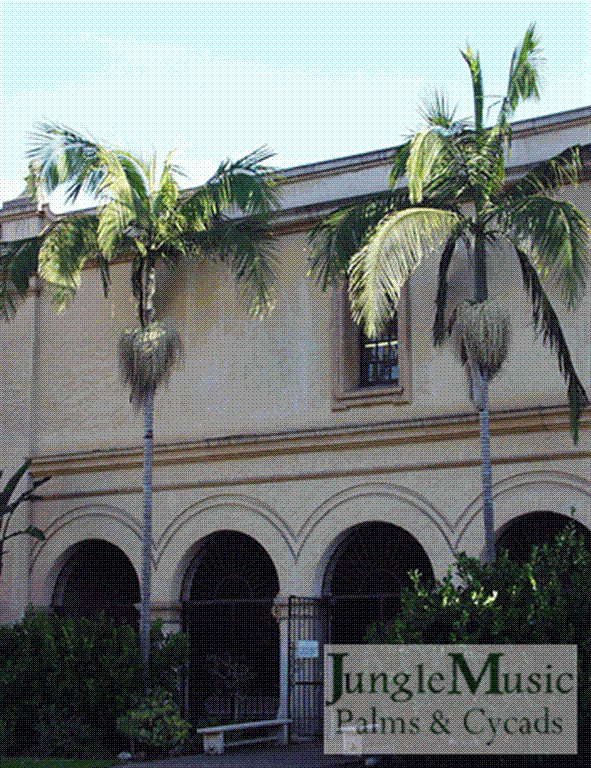

FREQUENTLY ASKED QUESTIONS ABOUT QUEEN PALMS (FAQ’s)
QUESTION: Can I stunt my Queen Palm so it won’t get so tall? Yes, one can deprive this species such that it will not grow well and probably never get too tall. But, it won’t look good. A professional would just suggest you try a different species rather than try to create an ugly Queen.
QUESTION: How do I stop my Queen from forming seeds? There is no available chemical or drug that will do this. Rather, we suggest you remove the blossom(s) when they first appear. This is not difficult and will prevent the dropping of fruit. You have to keep up with it.
QUESTION: Do I have to cut off the old dead leaves on my Queen Palm? You don’t have to, but the tree looks much better if you do. They will drop off by themselves in time. Remember, such dropping might be at an unpredictable time and hit a car or person.
QUESTION: Because they were so cheap, I planted way too many Queen Palms in my yard and now they are everywhere. What can I do? This is just poor planning. Yes, you saved money but the cost of removal will more than exceed the savings you made at the time of planting. We usually tell consumers to just plant a few if they like them. Never use them all over the place so that Queens are all you have. If one has this problem, the only option is to physically remove them or put up with their presence.
QUESTION: Are the seeds of Queen Palm poisonous? To be best of our knowledge, they are not. In fact, they are eaten by people in some parts of the world and by animals.
QUESTION: Why do architects always use Queen Palms in commercial design? There are two reasons for this. First, they are always available commercially and are affordable. The second is that many architects are many times unaware of good alternatives and use them from their “tried and true” list. This has been going on for many years.
QUESTION: I have Queen Palms in my yard. Will anyone buy them? The answer is typically “no” for reasons given above.
QUESTION: I live in a very cold area. Will Queen Palms grow for me outdoors? Queen Palms take down to about 17 degrees. If you get colder than this, you’ll need to utilize cold protection or pick an alternative species
QUESTION: I’ve heard of “Baby Queens”. What are they? This is merely a name given to a species of Chamaedorea, a New World palm that typically likes shade. This species, C. plumosa, is different and can be grown in sun along coastal strips and is attractive. But, it has a fairly thin trunk and does not resemble a Queen Palm. It was just a name given by growers to market their product.
SUMMARY
Queen Palms are a type of Syagrus. They are grown quite commonly worldwide in temperate and tropical areas. They are fast growing, get quite tall and usually quite affordable for the consumer. Overplanting of Queens can overwhelm a garden quite easily and one should limit the number used. Queens make poor potted or indoor plants. They need pruning from time to time and the seeds are non-toxic as far as we know. Queens are commonly used in commercial designs because of availability and cost. Cold tolerance of the Queen Palm is the mid to upper teens F. Palm enthusiasts tend not to utilize Queen Palms because they are so common. A hybrid between the Pindo Palm and the Queen palm is known as the Mule Palm. It is very attractive and more cold hardy than the Queen. Finally, Queens can be easily dug and moved but there is little demand for them in the marketplace so it is hard to sell them.
Thanks for reading this article. Further links below. We have lots of articles on palms at our site.
Phil Bergman
Owner Jungle Music Palms and Cycads

- PALM TREES, CYCADS & TROPICAL PLANT BLOG - October 1, 2020
- TRACHYCARPUS
The Windmill Palm - September 30, 2020 - FAN PALMS –
PALMS WITH CIRCULAR LEAVES - September 29, 2020
